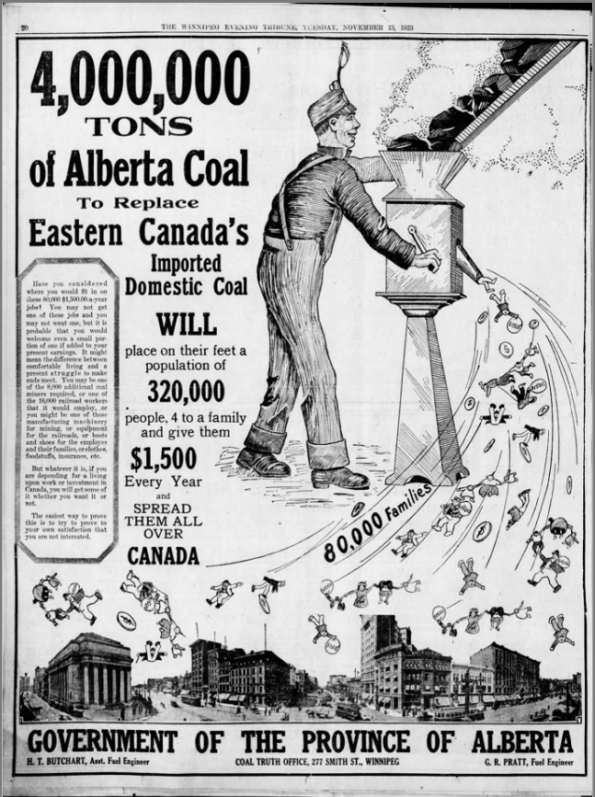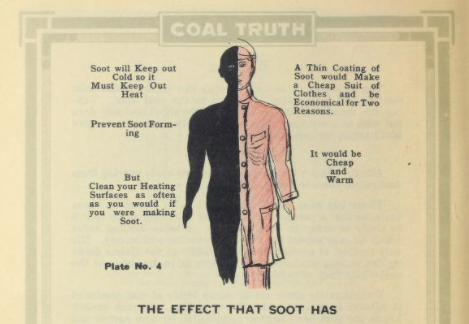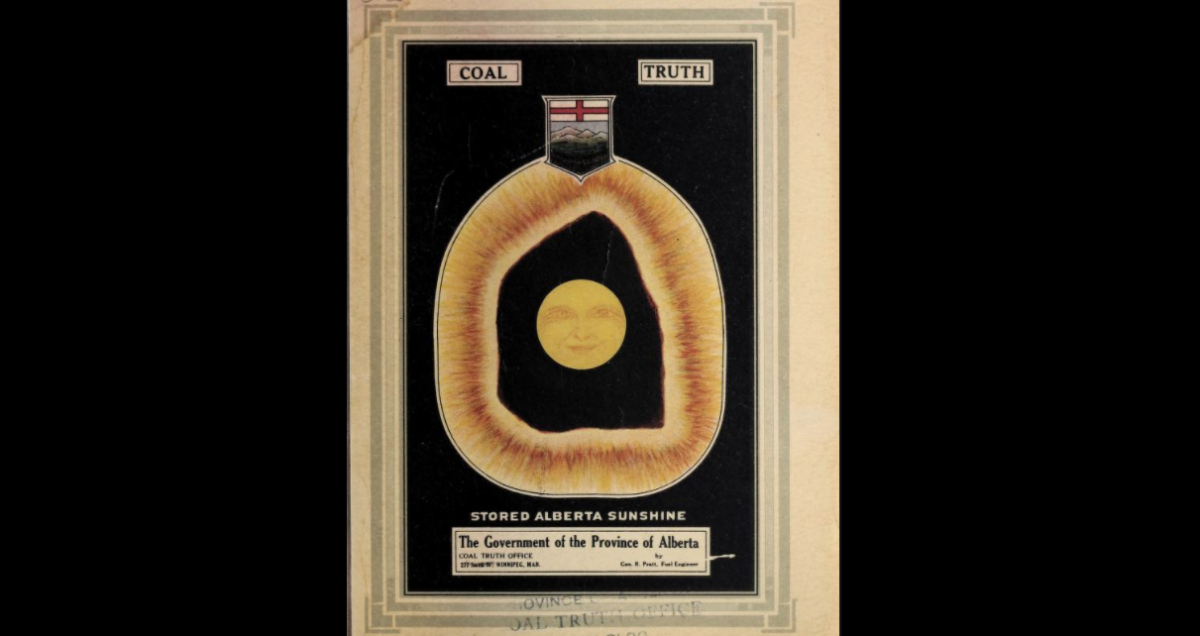The Government of Alberta Trade Branch once operated a COAL TRUTH OFFICE in Winnipeg in an apparent effort to market the sale and defend the reputation of Alberta mined coal for domestic use.

Today it is easy to ask why the office was located in Winnipeg of all places, but when the office opened in 1920, the Chicago of the North was the third largest city in Canada, a centre of trade and commerce, and a major stop in the Canadian railway.
We now know that burning dirty coal to generate electricity is a big driver of climate change and that open-pit coal mining has horrible impacts on the environment and drinking water. But one hundred years ago, the Alberta government was aggressively marketing the sale of coal for domestic and industrial use in Manitoba and Saskatchewan while facing stiff competition from already established coal sellers.
Even though this story took place a century ago, there are some similarities to our current day that are unmistakable, namely that the current United Conservative Party government is enthusiastically jumping back into the open-pit coal mining business and indulging in its own oil propaganda office and inquisition.
Easily accessible public records about the provincial government’s Coal Truth Office are sparse, but I have cobbled together some of what I was able to uncovered about Alberta’s original Energy War Room.
According to media reports from the time, the Winnipeg-based office was established in 1920 and maintained “a staff of Fuel Engineers for the purpose of assisting you in any problems which you may have particular to your equipment or fuels.”
The office also published a book, COAL TRUTH: STORED ALBERTA SUNSHINE, which was sold for 50 cents and included lengthy instructions about how to use Alberta coal and why Alberta coal was a superior coal.
“Statistics quote the Province of Alberta as having 70 per cent of Canada’s visible coal resources. While this represents an enormous number pf tones of coal, it must be remembered that civilization is using fuel at an alarming rate,” wrote Provincial Secretary Herbert Greenfield in the 1923 edition the propaganda booklet. “Therefor the need for economy.”
The Alberta government even attempted to brand Alberta coal as more ethical and efficient than coal from other sources.

“There is no country in the world that has such an abundance of similar coals. There are no raw coals in the world which have such desirable characteristics for domestic purposes as Alberta Domestic Coal – NOT excepting hard coal,” wrote George Pratt, the chief engineer stationed in the Coal Truth Office.
“Coal is the greatest necessity of Canada, yet the coal consumer takes the least interest in it, his policy being to leave it to whoever cares to take a hand,” Pratt wrote. “The individual coal buyer must be made to realize that he must get out and do something to help himself if he wishes to safeguard his interests.”
The Coal Truth Office was also active in defending the reputation of Alberta coal companies when, in the early 1920s, the federal government launched a public inquiry into an alleged price-fixing combine by Alberta-based coal companies.
The Alberta government’s legal representative in Winnipeg, J. B. Hugg, even urged the Commissioner to move the public inquiry’s activities into a private setting so that the publicity would not damage Alberta’s interests.

Hugg argued that advertisements published since the commission commenced investigations were misleading, deceiving and defrauding the public.
“I am instructed to say that the government of Alberta is deeply concerned in the Alberta coal industry,” Hugg was reported by the Winnipeg Tribune to have told the inquiry.
“By a series of advertisements, the coal buying public are being mislead, deceived and defrauded,” Hugg argued. “Alberta domestic coals of the highest value with long established records, are being slandered and grossly and deliberately misrepresented, and at the same time foreign coals wholly unsuited for domestic use are being passed off on the public and are being falsely represented as being most satisfactory and most efficient.”
“The government of Alberta urgently requests that you immediately investigate the activities of those persons who are misleading the public with regard to Alberta coals and endeavouring to reap a quick and unjustifiable profit out of the prejudices which they are arousing by making statements to the public regarding the very matters which are subject to this investigation,” Hugg continued.
It does not appear that the Public Inquiry’s Commissioner accepted the Alberta representative’s argument that a veil of secrecy should be drawn over the inquiry.
The rapid expansion of Alberta’s coal industry in the 1910s and 1920s did not come without strife.

In 1919, more than 6,500 Drumheller coal miners went on strike under the banner of the One Big Union to fight for better working and living conditions, and higher wages. The striking miners were brutally repressed by “special constables” hired by the largest mining companies in the Red Deer River Valley. The RCMP and Alberta Provincial Police turned a blind eye to the violence by the para-military mining company police.
Coal mining communities in the Alberta’s Rocky Mountains, like Blairmore and Nordegg, would become hotbeds for radical politics over the next two decades. Radical Labour and Communist candidates were routinely elected to municipal councils and the provincial legislature during this time.

Somewhat mirroring the current political debate over oil pipelines, transportation of coal became an issue of concern.
With railway costs becoming prohibitive, Alberta’s Provincial Secretary and Grouard MLA Jean Cote stood in the Legislative Assembly in 1921 to call for the creation of a dedicated transportation corridor on the Saskatchewan River to transport coal from Alberta to Winnipeg and beyond.
It is not entirely clear when the Alberta Coal Truth Office was shuttered, but the final mention of it I have been able to find was a report in the Winnipeg Tribune that the building at 277 Smith Street that housed the Coal Truth Office had burned down in Dec. 1924. According to the news report, “included in the loss is a new issue of the “Coal Truths” booklet with the original drawings and other valuable material.”
It is unclear whether the Coal Truth Office ever reopened after the fire.

